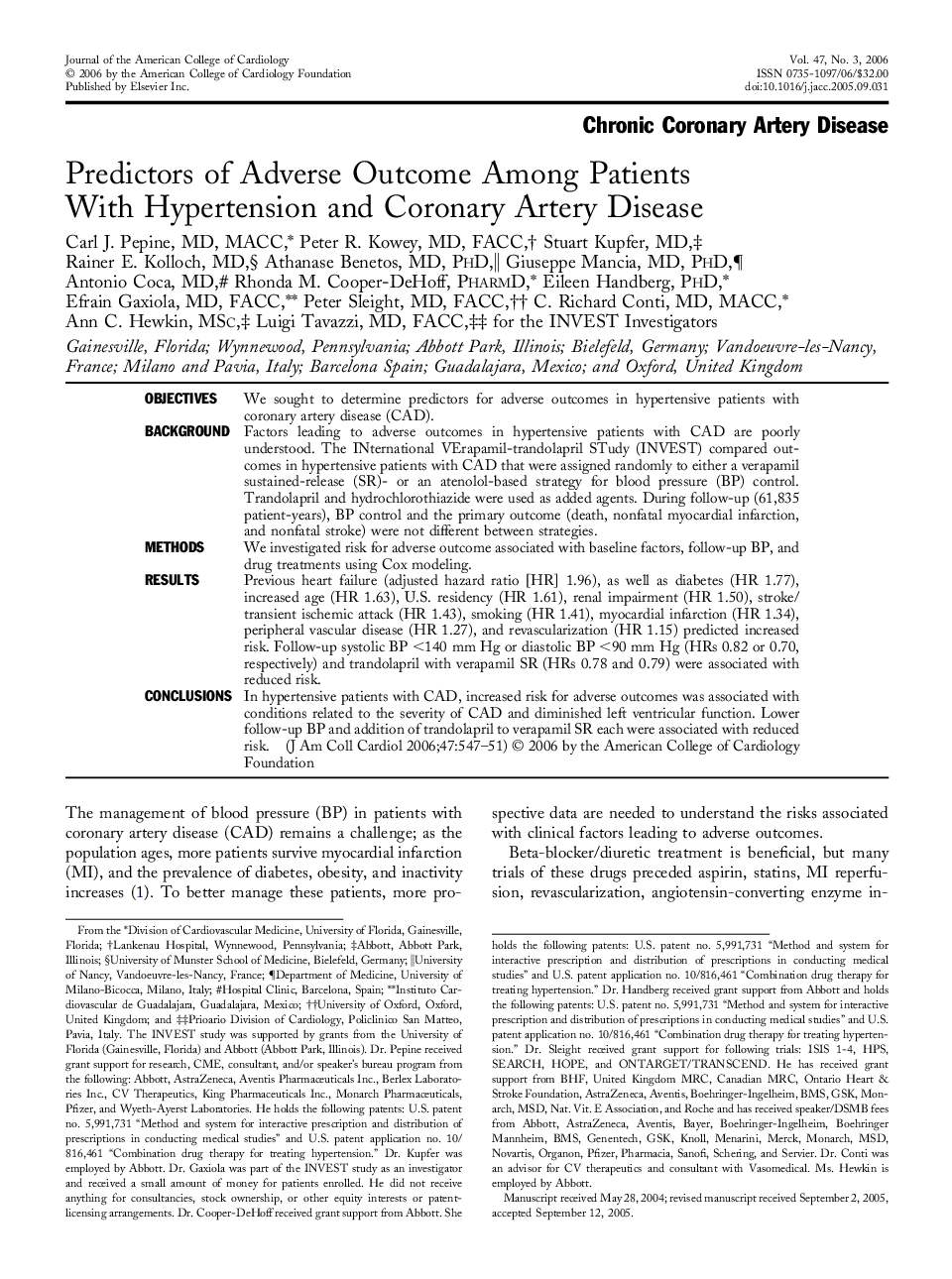| Article ID | Journal | Published Year | Pages | File Type |
|---|---|---|---|---|
| 2955494 | Journal of the American College of Cardiology | 2006 | 5 Pages |
ObjectivesWe sought to determine predictors for adverse outcomes in hypertensive patients with coronary artery disease (CAD).BackgroundFactors leading to adverse outcomes in hypertensive patients with CAD are poorly understood. The INternational VErapamil-trandolapril STudy (INVEST) compared outcomes in hypertensive patients with CAD that were assigned randomly to either a verapamil sustained-release (SR)- or an atenolol-based strategy for blood pressure (BP) control. Trandolapril and hydrochlorothiazide were used as added agents. During follow-up (61,835 patient-years), BP control and the primary outcome (death, nonfatal myocardial infarction, and nonfatal stroke) were not different between strategies.MethodsWe investigated risk for adverse outcome associated with baseline factors, follow-up BP, and drug treatments using Cox modeling.ResultsPrevious heart failure (adjusted hazard ratio [HR] 1.96), as well as diabetes (HR 1.77), increased age (HR 1.63), U.S. residency (HR 1.61), renal impairment (HR 1.50), stroke/transient ischemic attack (HR 1.43), smoking (HR 1.41), myocardial infarction (HR 1.34), peripheral vascular disease (HR 1.27), and revascularization (HR 1.15) predicted increased risk. Follow-up systolic BP <140 mm Hg or diastolic BP <90 mm Hg (HRs 0.82 or 0.70, respectively) and trandolapril with verapamil SR (HRs 0.78 and 0.79) were associated with reduced risk.ConclusionsIn hypertensive patients with CAD, increased risk for adverse outcomes was associated with conditions related to the severity of CAD and diminished left ventricular function. Lower follow-up BP and addition of trandolapril to verapamil SR each were associated with reduced risk.
